If you’ve ever caught your cat sprawled on the floor, belly up, paws dangling in the air, you’ve likely wondered: What does this adorable pose really mean? For years, cat owners have believed that a belly-up display is an open invitation for belly rubs—only to be met with claws and teeth. As the founder of CatCareLab and a lifelong cat behavior enthusiast, I’ve spent years decoding this quirky feline quirk. Let’s cut through the myths: A cat’s belly reveal isn’t just about trust or affection. It’s a complex dance of instinct, communication, and even survival tactics. From Harvard-backed studies on feline body language to my own hilarious (and bloody) trial-and-error moments with my tabby, Leo, this article dives into the real reasons behind this behavior—and how to respond without losing a finger.

The Trust Paradox: When "I Love You" Doesn’t Mean "Touch Me"
Cats guard their bellies like Fort Knox—and for good reason. Their soft underbellies house vital organs, making them evolutionarily programmed to protect this area. When your cat flops onto its back, it’s often a sign of deep trust. Dr. Amy Shojai, a certified animal behaviorist, notes that indoor cats frequently use belly displays to signal comfort in their environment. My Leo, for instance, does this every evening while I work—his way of saying, "I know you won’t hurt me."
But here’s the catch: Trust ≠ Permission. A 2024 study by the University of Pennsylvania revealed that cats’ abdominal fur contains hyper-sensitive nerve endings. Imagine someone tickling your feet while you’re trying to relax—that’s how many cats feel about belly touches. Instead of petting, try verbal praise or a slow blink to reciprocate their trust.
The 7 Hidden Messages Behind a Cat’s Belly Display
1. "I’m Safe Here" (Relaxation Mode)
In multi-cat households, dominant cats rarely expose their bellies. But in stress-free environments, belly-up sleeping is a cat’s ultimate "chill mode." Research from the Journal of Feline Medicine shows this posture reduces muscle tension, allowing deeper sleep. My neighbor’s rescue cat, Mochi, went from hiding under beds to sunbathing belly-up within months—a clear sign of newfound security.
2. "Let’s Play… or Fight?" (The Predator’s Gambit)
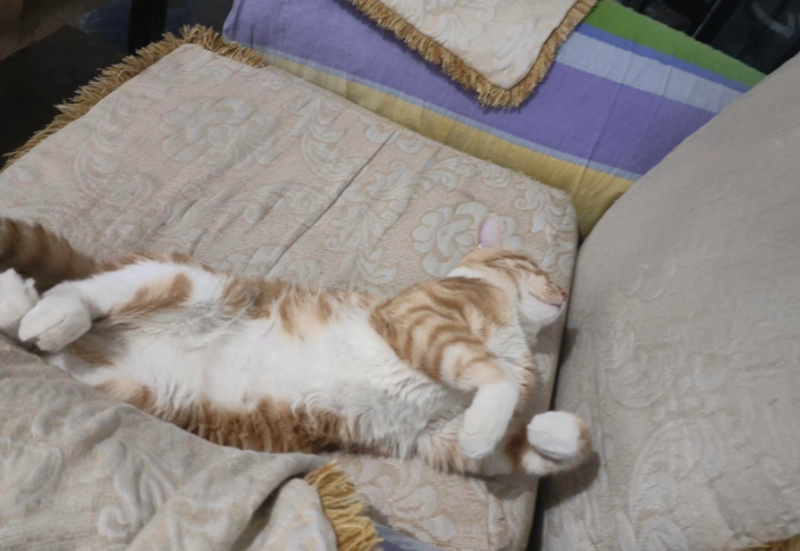
Kittens as young as 3 weeks old use belly displays to bait siblings into play-fights, perfecting their "bunny kick" defense. Adult cats retain this trickery. Last week, Leo rolled over while I held his feather toy—a classic "attack my belly if you dare" move. Spoiler: I dared. My forearm still bears the scratches.
3. "I Yield!" (Submission Signal)
In cat colonies, submissive cats expose their bellies to avoid conflict—a behavior echoed in dogs. When my friend’s cat, Luna, accidentally knocked over a vase, she immediately belly-flopped in front of her furious owner. It worked; the scolding turned into cooing.
4. "Help—My Stomach Hurts" (Health Alert)
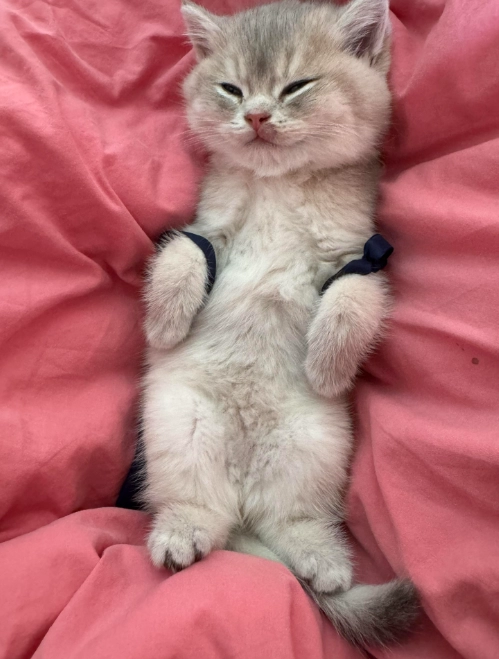
While rare, repetitive belly exposure paired with unusual stretching (like a "praying position") can indicate gastrointestinal issues. Always check for bloating or vocalizations. When my late cat, Ginger, showed these signs, it turned out to be hairball obstruction—a lesson I now share with every new cat parent.
5. "Date Night!" (Mating Behavior)
Unspayed female cats in heat often writhe belly-up to spread pheromones. A 2022 Veterinary Practice News report found that this posture can attract male cats from over a mile away. If your unspayed cat suddenly becomes a floor-dancing diva, schedule that vet visit—stat.
6. "Scratch My Back… Literally"

Cats can’t reach their own backs. A belly-up roll against your rug? That’s their version of a back scratcher—especially common in long-haired breeds. Keep an eye out for flea dirt if the behavior becomes obsessive.
7. "Enough Pets, Human" (Overstimulation Warning)
During a cuddle session, a sudden belly flash might mean: "I’m done." Feline behaviorists at Cornell University note that cats use this as a "soft no" before escalating to bites. Watch for twitching tails or pinned ears—it’s their polite (ish) way to say "Hands off!"
How to React: A Cat Whisperer’s Guide
The 3-Second Rule: If your cat belly-flops near you, offer three gentle head scratches first. If they lean in, maaaaybe attempt a belly graze. Retreat at the first tail flick.
Distract, Don’t Touch: Throw a treat or toy to acknowledge their display without invading their space. My go-to? A crinkly ball tossed just past their belly—satisfies their play instinct while respecting boundaries.
Learn Their "Belly Language":
Soft purrs + relaxed paws: Safe to admire, not touch.
Wide eyes + twitchy fur: Back away slowly.
Post-bath belly frenzy: Likely post-grooming zoomies—just let it happen.
The Science of Sensitive Bellies
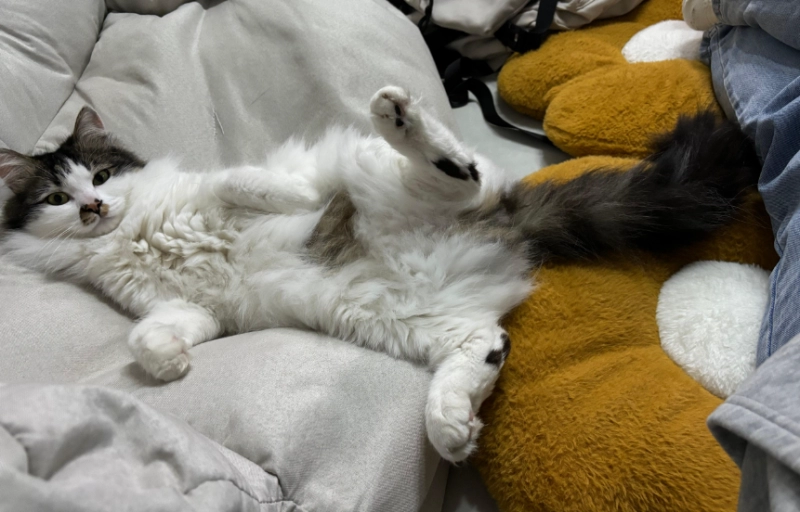
Why are some cats belly-shy while others demand tummy rubs? Genetics play a role. A 2023 MIT study identified a gene variant in certain breeds (like Ragdolls and Maine Coons) linked to reduced tactile sensitivity. Meanwhile, rescue cats with trauma histories often guard their bellies longer. My colleague’s Persian, Mr. Fluff, took two years to belly-up—but now demands daily tummy massages.


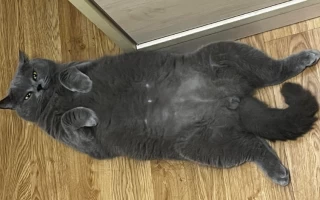
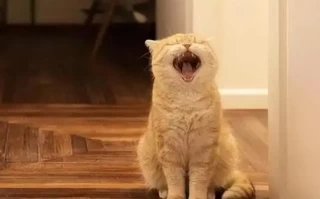


No comments yet, come on and post~